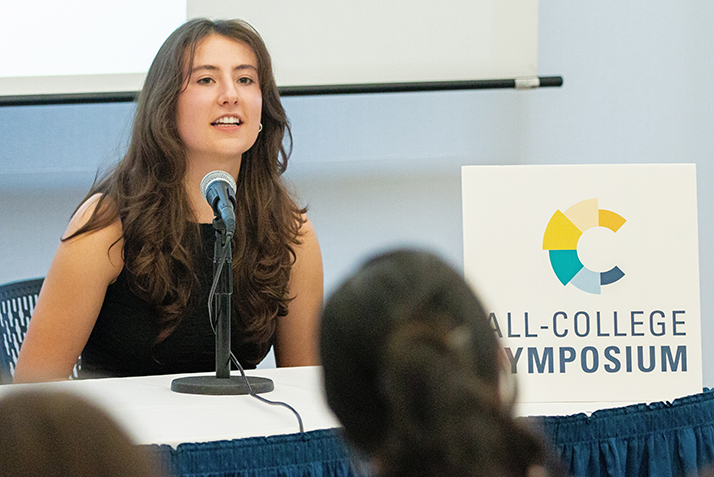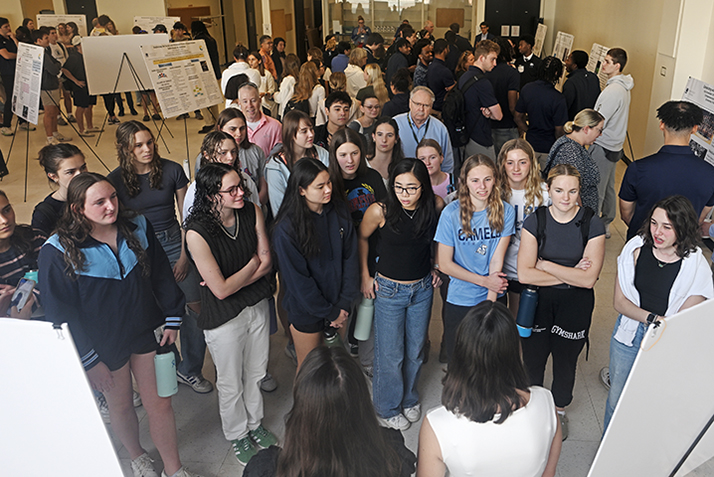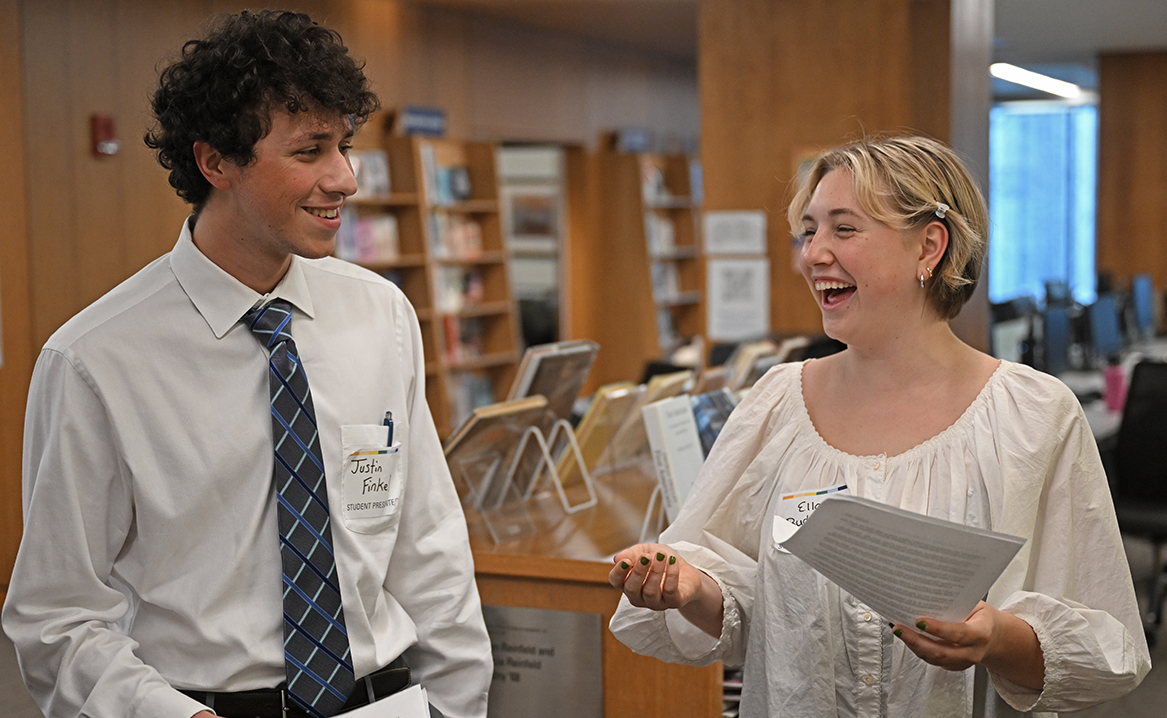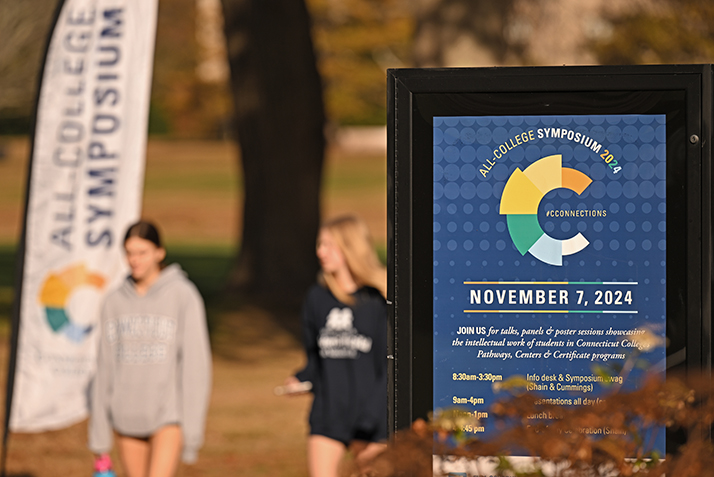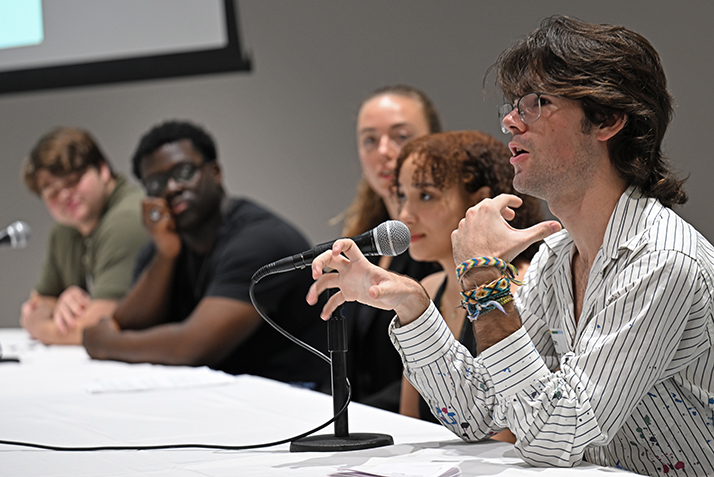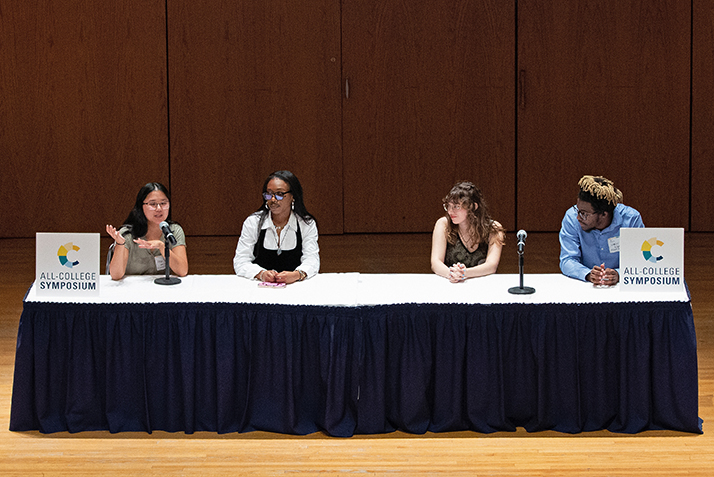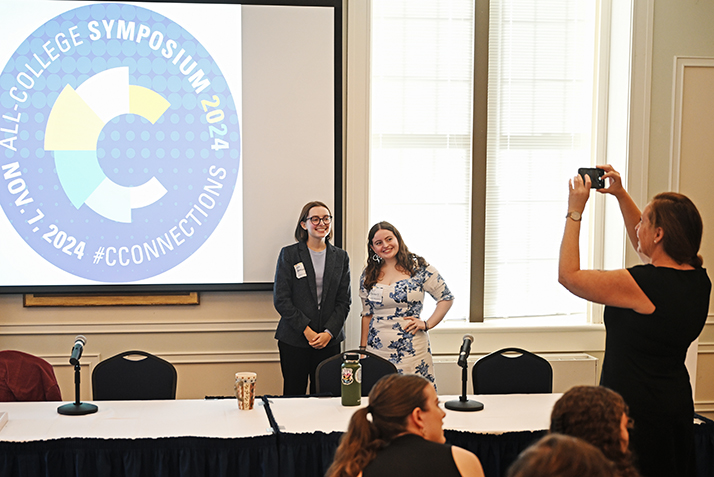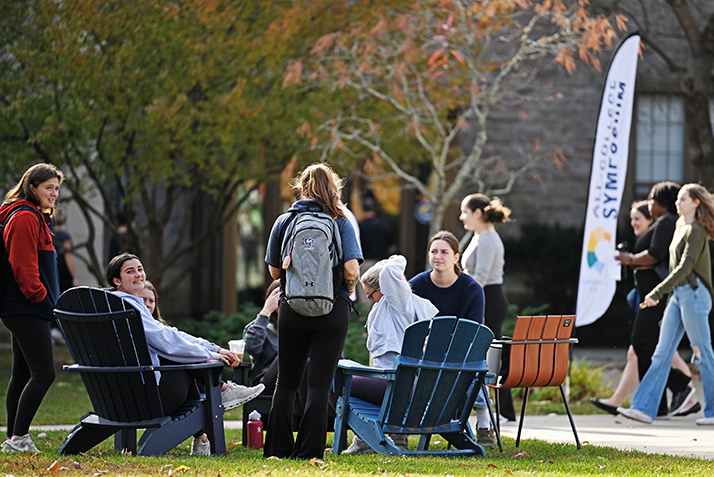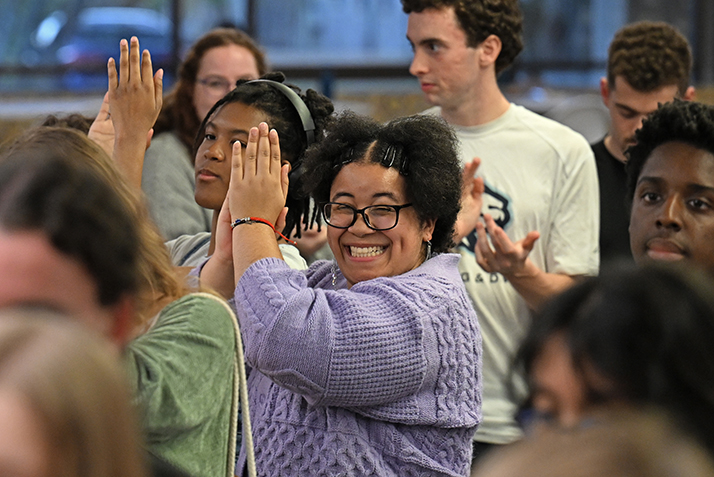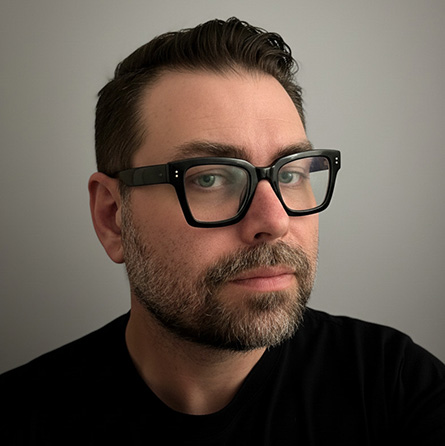
Brilliance and creativity on display at the sixth annual All-College Symposium
More than 200 seniors presented the results of their transformative academic experiences during the daylong event
Surrounded by a captivated audience of students, faculty and staff in a bright room on an unseasonably warm November day, Zale Peart ’25 makes a passionate argument for investing in America’s railways.
“Affordable, efficient and electric rail transportation is an achievable goal in the United States,” he says. “Passenger rail should be viewed as a public good—an essential service designed to benefit the American people, rather than a network purely driven by profit.”
Behind him, his poster lays out his case. Strategic government investment in electric rail routes and high-speed rail lines would support economic growth and social equity by creating jobs and providing rural communities with accessible travel options, while also significantly lowering greenhouse gas emissions.
Peart, an international relations and history double major and scholar in the Social Justice and Sustainability Pathway from Brooklyn, New York, was one of 202 seniors who presented at Connecticut College’s sixth annual All-College Symposium on Nov. 7. The culminating conference for Connections, Conn’s signature curriculum, the Symposium highlights students’ integrative learning through four years. In talks, panels and poster sessions, the student presenters showcased the connections they have made among their courses and research, their jobs and internships, and their work in local communities and around the globe—along with the questions that animated their choices.
Watch more videos in the Making Connections series.
Peart says he joined the Social Justice and Sustainability Pathway to channel his lifelong fascination with trains into meaningful academic research and to explore how this infrastructure impacts economic and social mobility.
“The pathway offered a structured way to deepen my understanding of how sustainable, equitable transit solutions could transform public infrastructure in the U.S.”
In their presentations, Peart’s fellow seniors covered a broad range of topics, including financial literacy in youth education, sustainability in the fashion industry, eelgrass restoration in Long Island Sound, access to mental healthcare in the U.S. and France, the effects of post-dictatorship politics on Argentina’s legalization of abortion, factors influencing information sharing decisions, the ethics of displaying human remains in museums, improving beach water quality communication, the disproportionate impact of plastic manufacturing on vulnerable communities, socioeconomic barriers in melanoma care, and preventing heat stroke death in high school sports.
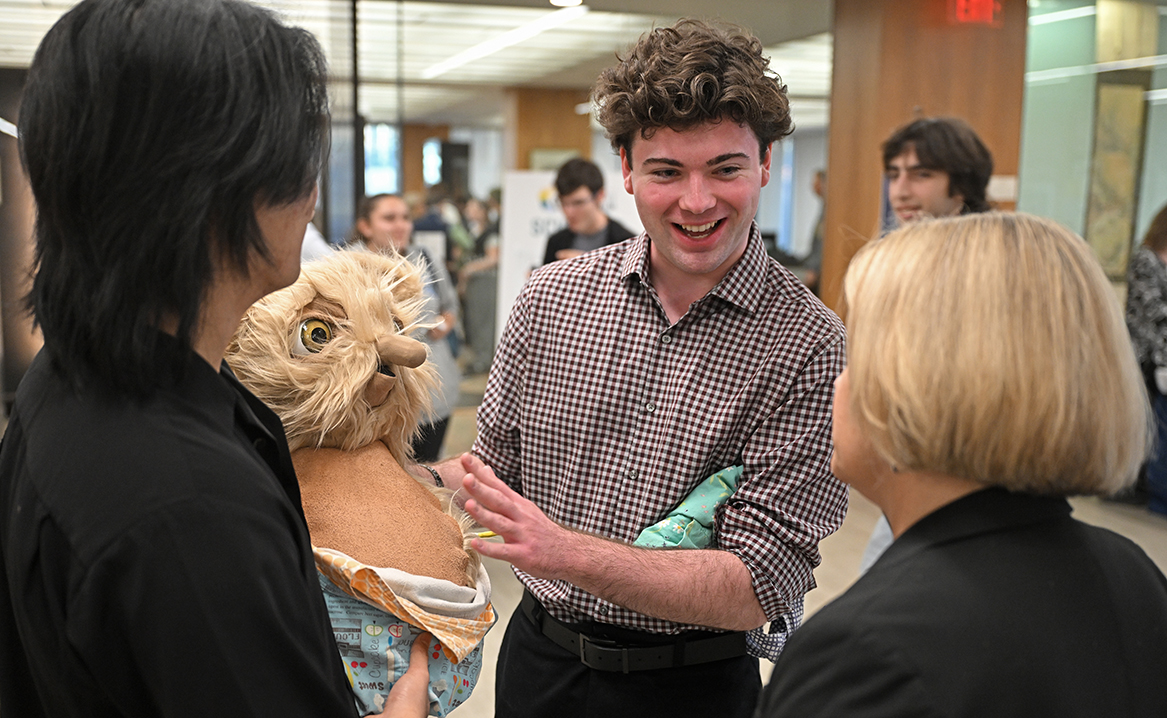
Bianca Falcone ’25, an art and psychology double major and scholar in the Creativity Pathway from Wellesley, Massachusetts, presented her research on how museums and art galleries can enhance accessibility and engagement for neurodiverse audiences. Falcone, who has curated the all-student art show at Conn since her first year on campus and completed internships as a gallery assistant at Cuchifritos Gallery + Project Space and at Ruiz-Healy Art, both in New York City, showed the audience how simple steps can be put into place to enhance neurodiverse audience members’ experiences in a multitude of ways.
“After graduation, I am hoping to go into some form of art administration work or communication design. My research in the Creativity Pathway has helped me affirm this interest by bridging my studies in art, psychology, art history and design,” she said.
At a celebratory gathering at the end of the Symposium, President Andrea E. Chapdelaine, who began her tenure at Conn in July, congratulated the seniors on an “amazing day.”
“From the day I knew I was coming to Conn, I was looking forward to the All-College Symposium and let me tell you, you blew my expectations out of the water,” she told the seniors.
Watch more videos in the Making Connections series.
Chapdelaine said that as she was “reflecting on all the amazing things I was hearing today about your passions, your interests, your research, your critical analyses, your going out into the world and making a difference,” she was reminded of William Cronon’s essay, “‘Only Connect …’ The Goals of a Liberal Education,” and his 10 qualities of individuals who have been liberally educated.
“They listen and hear; they read and understand; they can talk with anyone; they can write clearly and persuasively and movingly; they can solve a wide variety of puzzles and problems; they respect rigor not so much for its own sake but as a way of seeking truth; they practice humility, tolerance, and self-criticism; they understand how to get things done in the world; they nurture and empower the people around them; and finally, they follow E. M. Forster’s injunction from Howards End: ‘Only connect …,’” she said. “That is what we saw today.”

